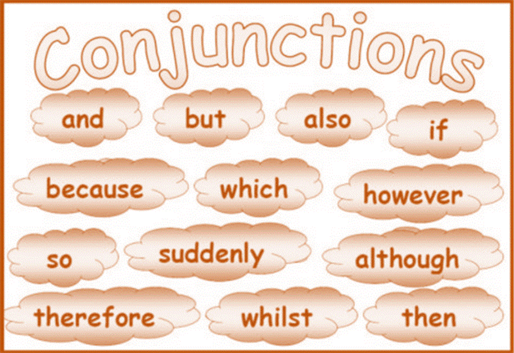
CONJUNCTIONS
Unit Overview
In this unit, we will
discuss Deaf history, fingerspelling, vocabulary, grammar and Deaf Culture.
History
A
cochlear implant is a small electronic device that provides sound to a person
who is profoundly deaf or hard of hearing. The device is made up of two
parts. One, which sits behind the ear. The other, which is surgically implanted
under the skin.
During
the 18th century, Alessandro Volta discovered the electrolytic cell.
This is about the time that research in the electrical methods of stimulating
hearing began. He was the first to stimulate the ear electronically. He
connected a battery with about 50 v to two metal rods. He then placed the rods
in his ears. The result was “a boom within the head” followed by what could be
compared to as thick boiling soup. This was tried off and on for the next 50
years, but did not produce consistent results with tonal quality.
Other
methods of stimulation were attempted in Paris, France during the 18th
and 19th centuries. It was soon realized that stimulating the
auditory system was not producing a good hearing sensation. In 1855, Duchenne
of Boulogne stimulated the auditory system with alternating current by
inserting an instrument into a circuit containing an induction coil and
condenser. The resulting sound was similar to that of a fly’s wings hitting
glass.
During
the early 1900’s, while there was a lot of excitement with the break trough’s
made with the cochlear implant, there was just as much skepticism. Many people
felt that the procedure was too invasive. In 1930, interest was renewed when the
Thermionic valve was introduced. This allowed the auditory system to be
stimulated electronically with greater exactness. During this time, Wever and
Bray showed that the electrical response from the area of the auditory nerve of
the cat, was similar to that which the ear had been exposed. Russian
researchers examined what happened when the electrical stimulus was changed. They
decided that the cochlea was the site of stimulation. The tympanic membrane had
no real effect on hearing, if removed surgically. Researchers Stevens and
Jones discovered that when the cochlea was stimulated manually, there were
three mechanisms producing hearing. The first was the middle ear acting as the
transducer. The second was the basilar membrane. This helped turn electrical
energy into sound. The third was direct stimulation of the auditory nerve. This
produced a rough hearing sensation.
While
the history of the development of the cochlear implant dates back several
centuries, the most recent advancements have been made starting in the 1940’s
and on. After the discovery that the mechanisms involved in electrophonic hearing
showed, hearing happens when transducing electrical energy into sound
vibrations. It also showed that residual cochlear function is necessary. Local
stimulation of the auditory nerve fibers is needed.
Lundberg
performed one of the first recorded attempts to stimulate the auditory nerve
with a sinusoidal current during surgery in 1950. In 1957, Djourno and Eyries wrote a more detailed study to
describe the affects stimulating the auditory nerve had on deafness. They
placed a wire on the auditory nerves that were exposed. When a current was
applied, the patient reported hearing high frequency sounds. The generator gave
up to 1000 hz, and gradually gained limited recognition of words.
In
1964, Doyle inserted several electrodes into a patient’s cochlea with total perceptive
deafness. He reported that the results were “satisfactory” and it was
significant in that the patient was able to repeat phrases. In 1966, researcher
Simmons reported that better tonality was possible. While the cochlear implant
advancements were coming along, there were several technical hold ups as far as
the materials the cochlear implants were made from.
In
1972, a speech processor was introduced to the markets. It worked in
conjunction with the House 3M. The FDA approved the marketing of the cochlear
in November, 1984. During the 1980’s children were also implanted with the
House 3M single channel device. Work on the cochlear implant continued around
the world. The age criteria also went from 18 to 2. With the commercial success
of Nucleus, the cochlear is now viewed as an assistive device.
 Now answer questions 1 through 20.
Now answer questions 1 through 20.
Fingerspelling
Please
go to the website ASL.ms. Please practice fingerspelling for 20 minutes. When
you are finished, type your score in the box for question 21.
Vocabulary

Grammar
One
thing that ASL has in common with English is the use of conjunctions. Many
times people feel that they need to go with English word order because they are
not sure how to join the 2 phrases or concepts. Conjunctions are used to
connect words, phrases or clauses. These words are sometimes used as
transitions as well. These are the words that connect word, phrases or clauses.
Examples of these words are and, but, either, neither, finish, wrong,
understand, hit, find (find out). This is not an all-inclusive list.
 Now answer question 22. Retype the five
sentences given. In question 23 upload your video signing the five sentences.
Now answer question 22. Retype the five
sentences given. In question 23 upload your video signing the five sentences.
Deaf
Culture
In
Deaf culture, cochlear implants pose a big controversy. Many Deaf hold true to
the belief that there is nothing wrong with being Deaf, and they don’t need
fixing. Other Deaf people feel that Deafness is an anomaly. They feel that if
given the chance to hear, why would someone not want that opportunity? This is
a controversy with no easy answer, as everyone’s personal needs are different.
What do you think should be considered when deciding
whether a person should get a cochlear implant? Find 3 articles or resources to
support your answer. Go to question 24 to upload your paper.